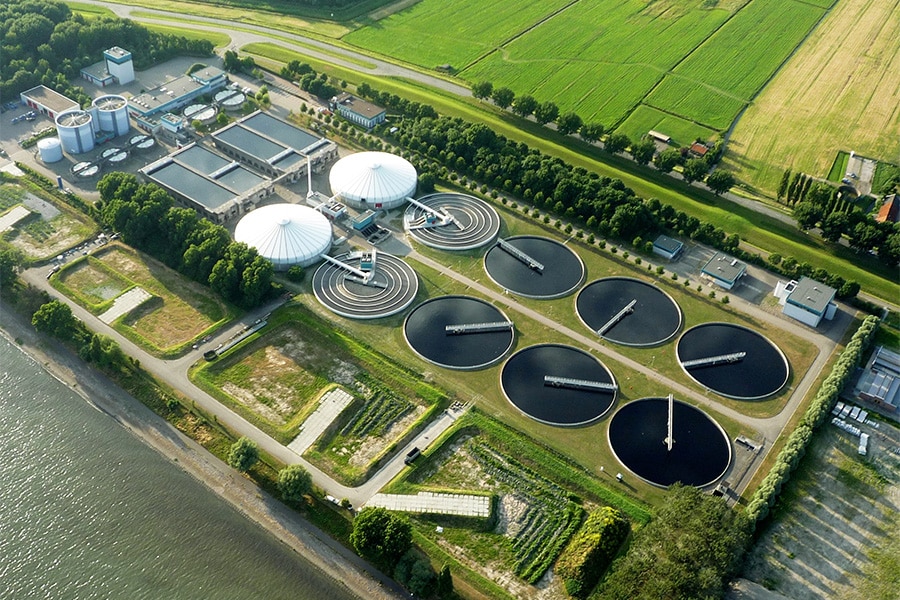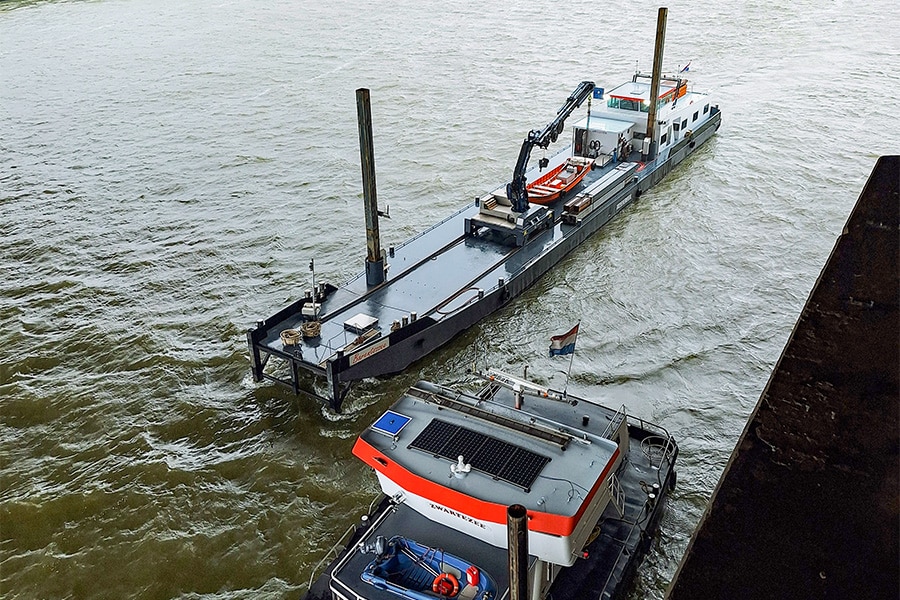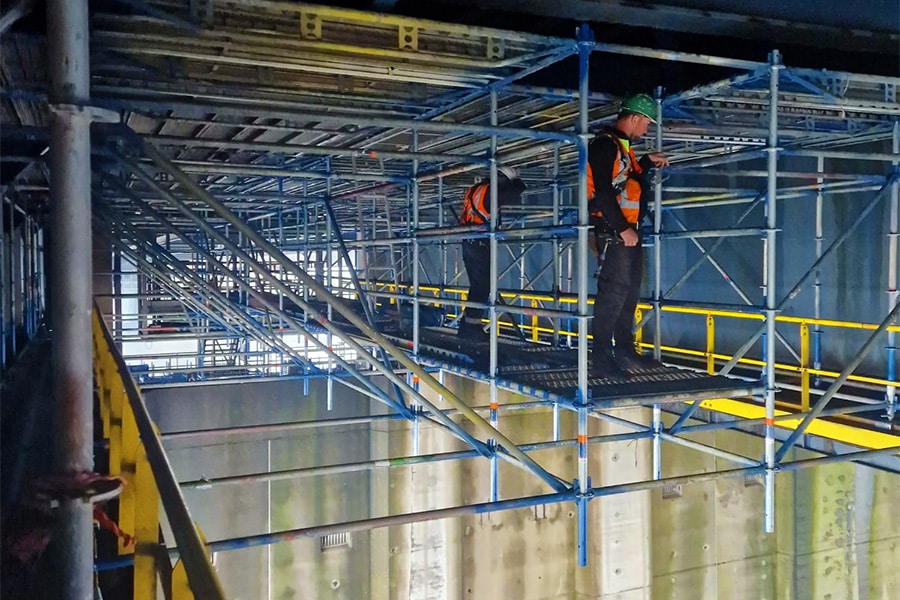
Eco-friendly, concrete building materials play an important role in making the construction industry more sustainable
The current MPG calculation methodology does not include the temporary CO2 sequestration in building materials, so the environmental impacts cannot yet be clearly identified. Thus, current MPG calculations cannot indicate whether a wooden building has a high residual value or whether the concrete building has a negative residual value. Because this calculation method does not include temporary CO2 sequestration, the importance of carbon capture & storage projects for environmentally friendly concrete, for example, is insufficiently mapped, but the mpg calculation method also does not provide insight into temporary CO2 sequestration in bio-based products. The concrete industry is currently working hard to put irrefutable facts on the table about how "green" the production process of concrete building materials is. A good example of this is VBI's environmentally friendly hollow-core slab floor. In fact, VBI has managed to improve the integral product environmental profile, further reducing the environmental and CO2 impact of all their materials.

"Building materials will have to perform better to contribute to a CO2 reduction of 85% by 2050, compared to today," said Mantijn van Leeuwen, director of NIBE, Netherlands Institute for Building Biology and Ecology. At NIBE, environmental impact is calculated using the NIBE environmental ratings. Concrete has a fine performance with a modest environmental burden, it shows. Meanwhile, a vigorous debate has emerged around right and wrong building materials. In the Manifesto for a level playing field for a more sustainable Netherlands (Dec 2020), several parties in the construction industry argue for a standard of sustainable construction based on clear calculations. "In this discussion, there can actually be no question of good or bad building materials," says Van Leeuwen. "On a kilogram basis, compared to glass, steel or aluminum, concrete can certainly not be called a heavily environmentally damaging material." For the application of concrete, the functional unit must be looked at, i.e. what function the material performs in a building, how much of it is needed and what the percentage of CO2 emissions is.
Short-term storage
Putting CO2 storage into the calculation rules is quite complicated. "Our concern is the cumulative CO2 budget until 2050, for which the Netherlands is still allowed to emit a total of 950 million tons of CO2. The Netherlands is now emitting about 180 million tons of CO2 annually, so that won't last long," says Van Leeuwen. So the route to (almost) zero CO2 emissions in 2050 is perhaps more important than the end point. "Biobased materials, such as wood, contribute to CO2 reduction via plant CO2 sequestration (although it is important that as many trees are planted again as are harvested). Because the captured CO2 will be released again someday, this can be seen as temporary sequestration." The current calculation methodology for determining the environmental impact of applied building materials (mpg) in a building does not include the impact of both plant-based and temporary CO2 sequestration, so we may be missing something there. According to Van Leeuwen, product developments from the concrete industry have been adding their values to CO2 savings for some time. "VBI ductile slab floors have now proven themselves as a sustainable concrete building material. These materials can last a hundred years or more, can be remounted and thus have an excellent environmental performance," notes Van Leeuwen. "VBI's green canal plate floors are even more sustainable by 30% less CO2 emissions, than standard canal plate floors. In itself strange that the construction industry does not yet have these building materials on its radar enough." According to Van Leeuwen, VBI is a frontrunner with these types of innovations that demonstrably save CO2.
Good environmental profile
Peter Musters is a building concepts consultant for VBI. He explains that VBI is constantly working on improvements and innovative developments for their hollow-core slabs. "Our goal is that our building materials make a significant contribution to the reduction of CO2 emissions and thus to the climate challenge." He prefers not to see each building material play its own game. He does believe that building parties should collectively ensure 2 buildings reach zero net CO2 emissions in the run-up to 2050. "Our products are used in both stony, concrete and timber support structures, this is already happening in practice." Currently, wood has a sustainable, green image. "When VBI introduced the sustainable floor, there was little enthusiasm for it, with the exception of projects pursuing a BREEAM label. With the right arguments and calculations, we can demonstrate that hollow-core slabs are already designed in the basics to make a functional floor with the least amount of raw materials concrete and steel. That immediately provides a good environmental profile and makes the stony hollow core slab floor an environmentally friendly building material." Musters explains that VBI has succeeded in improving the integral product environmental profile to further reduce the environmental and CO2 impact of the entire product range. "As a result, the validated environmental shadow price of the complete VBI range is over 20% lower in 2020 than it was in 2018." The results of the latest LCA calculations justify allowing all VBI floors to carry the label 'VBI Channel Plate Flooring Green'. The environmental values are now included in the National Environmental Database (NMD) as Category 1 data and are substantiated by Environmental Product Declarations (EPD). "For a good environmental score, these product environmental data can be extracted directly from the NMD and included in the mpg calculation," explains Musters.
Lightweight concrete floors
Pim Peters is co-director of IMd Raadgevende Ingenieurs in Rotterdam, one of the signatories of the construction manifesto for a level playing field. "Not only biobased materials should be better assessed in mpg calculations, but all building materials, including concrete," Peters points out. IMd specializes in the design of sustainable structures and makes comparable variants of structures for their designs, testing the mpg impact for each variant. "Hybrid structures are often sustainable due to material use, adaptability and detachability," he says. "Concrete remains an important building material, including floors," he points out. "To meet noise requirements, mass is needed. Wooden hollow-core slabs in an apartment complex are less suitable, because no one tolerates nuisance from upstairs neighbors. To solve this, constructively a non-functional mass is needed that must be included in the mpg calculation." Lightweight concrete floors, such as hollow-core slabs, are more durable than solid concrete floors, which are heavier and have a greater environmental impact. "VBI's hollow-core concrete floors have the advantage of being lightweight and containing less material. They are statically determined elements with spans of up to 14.4 meters. In this size, they have less environmental impact than a 7.2-meter span," Peters said.
Hybrid constructions
Both wood and concrete can be used well to balance the building to arrive at a net CO2 emission of zero, such as hybrid buildings with concrete below ground level on which a wooden structure is put. "Depending on the function, the right balance of building materials can be applied in a building, for example with load-bearing walls of wood and concrete floors because of sound transmission," Peters said. Concrete remains an essential building material, where opportunities should be sought to use wood as a conscious alternative to concrete. Herein lies a task for the government to scrutinize the entire CO2 emissions of a building, leading up to 2050. For example, by asking what the demolition costs of a wooden or a concrete building will be after 50 years. Current mpg calculations cannot indicate whether a wooden building has a high residual value or the concrete building has a negative residual value, so the environmental impacts cannot yet be clearly identified. NIBE is currently investigating how the mpg calculations can be adapted for an accurate indication of short-term CO2 storage. "The cement industry is now also working on short-term storage of CO2, for example with carbon capture & storage," explained Van Leeuwen of NIBE. Cement manufacturer Heidelberg Cement wants to capture CO2 and store it underground for at least 50 years. "An excellent and perhaps necessary short-term solution to contribute to CO2 reduction. Currently, carbon capture & storage is also not included in the mpg calculations. It really should be, if we want to use mpg calculations to drive short-term CO2 reductions," Van Leeuwen said.




